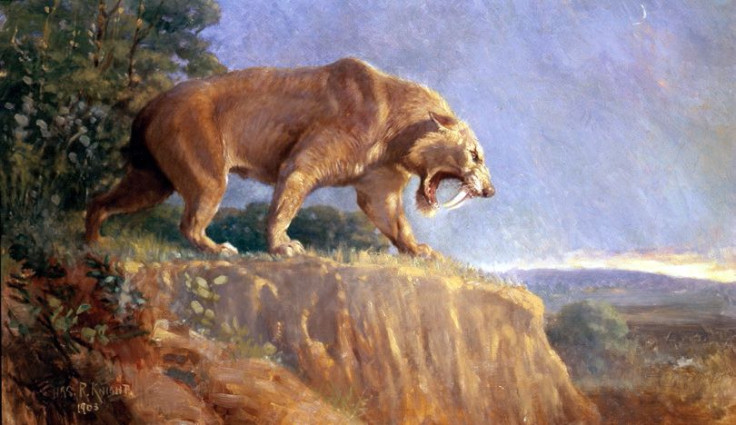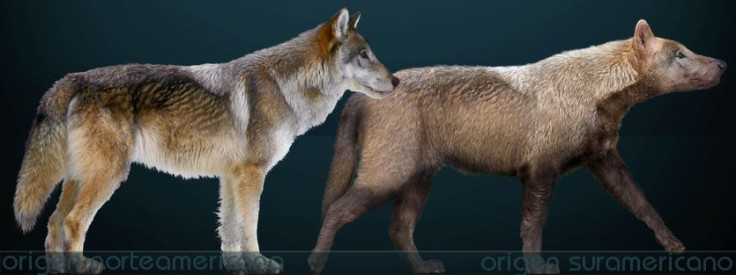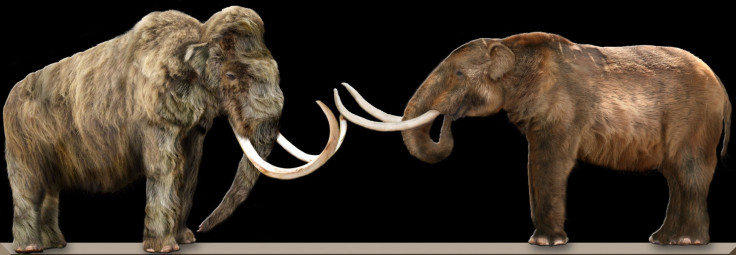4 Iconic Extinct American Animals, From Dire Wolves To Saber-Toothed Tigers

Many animals have come and gone since the dawn of time on Earth. In fact, almost all the species ever to live on this planet already are dead.
Some never will be recognized for their contributions to evolutionary history because fossils of them have not been found, but archaeologists have found a large number of skeletons and other remains that give us a glimpse of what life was like back then. Here’s a look at some of the most iconic extinct animals of America:
Dire wolves

These animals have burst into popularity because of the HBO series "Game of Thrones," but they are not fictional — they were related to today’s dogs, wolves, coyotes and other canines. As canines spread across the globe hundreds of thousands to millions of years ago, the dire wolves were born. The San Diego Zoo says they emerged in parts of eastern North America and northern South America about 300,000 years ago, and a western subspecies of dire wolves followed although it was a smaller animal.
Dire wolves lived in packs and could survive in a lot of different habitats, including forested mountains, marshes and plains, the zoo explained. They were 75 to 150 pounds and were about 4 feet long — with 2-foot tails. They would have been heavier and broader than the modern wolf, but similar to the wild dogs we know today.
The entire species went extinct about 12,000 years ago, but thousands of dire wolf fossils have been found in the La Brea Tar Pits in Los Angeles, a hotspot for fossils, from the Ice Age in particular, giving us an idea of what the canines were like.
Read: If De-Extinct Animals Don’t Eat Us, What Will We Name Them?
Woolly mammoths
What could be better than an elephant? Maybe a giant, hairy elephant. That’s what woolly mammoths looked like before they went completely extinct about 4,300 years ago — after going extinct on the American/European mainland about 10,000 years ago — which makes sense because they are related to today’s Asian elephants. They had tusks that they might have used to fight and to dig for food and their roughly 13-foot frames could weigh about 12,000 pounds.
Even though they seem much more ancient, the animals only really appeared a few hundred thousand years ago, long after the human species first evolved in Africa. Humans had migrated off that continent to Europe and North America while mammoths were still around, which means they interacted with the famous animals.
They may not have been such a pretty sight, however. A recent genetic analysis that compared woolly mammoths that lived during the species’ peak about 45,000 years ago to those that lived as it was on its last legs showed that the small population hanging on just before extinction would have been so inbred, they would have lost their sense of smell, their stiff coats would have turned into soft, translucent hair, and they would have had irritated stomachs. They also would have had osteoporosis. It’s safe to say if de-extinction scientists manage to bring woolly mammoths back to life, they will use the hardier version.

American mastodons
The American mastodon was distantly related to the woolly mammoth and lived alongside it for a time. The BBC reports the animals were most commonly found in the eastern part of the United States although fossils have been found elsewhere, too.
All mastodons are believed to have roamed the planet throughout the Pleistocene Epoch, which ran from 2.6 million years ago through about 12,000 years ago, with the American mastodon probably surviving a bit longer. They would have found themselves living among Native American people and likely were hunted.
The mastodons were shorter than today’s elephants, and shorter than mammoths, but were still built solidly.
Read: Are Modern Lions Going the Way of the Saber-Toothed Cat?
Saber-toothed tigers
This family of felines officially is known as Smilodon but is commonly called saber-toothed tigers, part of a wider group of animals known as saber-toothed cats. This group was distantly related to cats of today like actual lions and tigers and were about the size of a modern African lion. They got their name from the canines in their upper jaws, which were enormous and sharp and used for stabbing and slashing at prey like the mastodon.
The saber-toothed tiger went extinct about 11,000 years ago, dying out in regional waves along with mastodons across North and South America.
As with dire wolves, saber-toothed tiger remains have been found in large numbers in the La Brea Tar Pits, with the felines probably getting stuck in the molten asphalt of that region — which trapped and preserved so many ancient American creatures — as they were going after prey.
© Copyright IBTimes 2024. All rights reserved.











